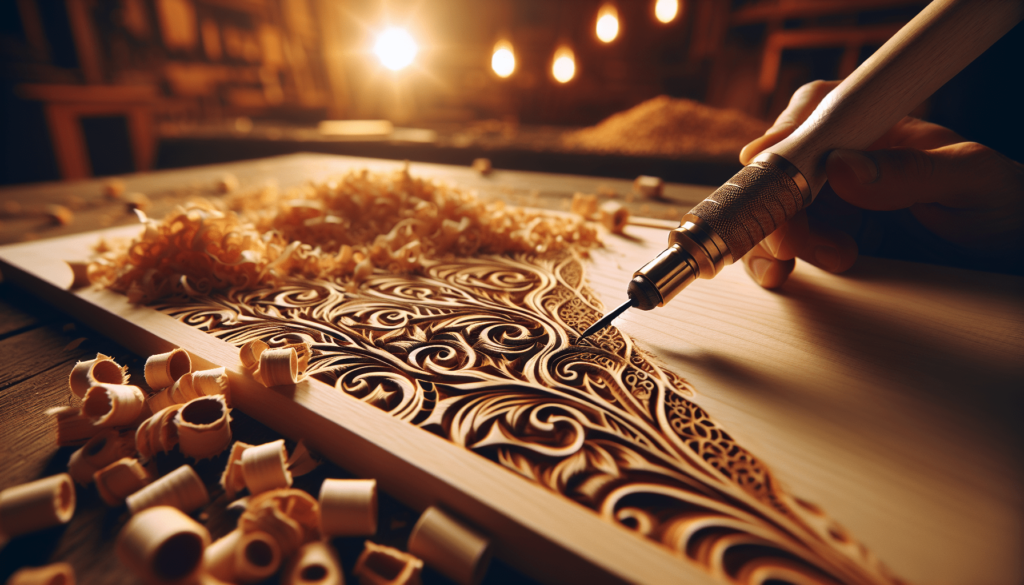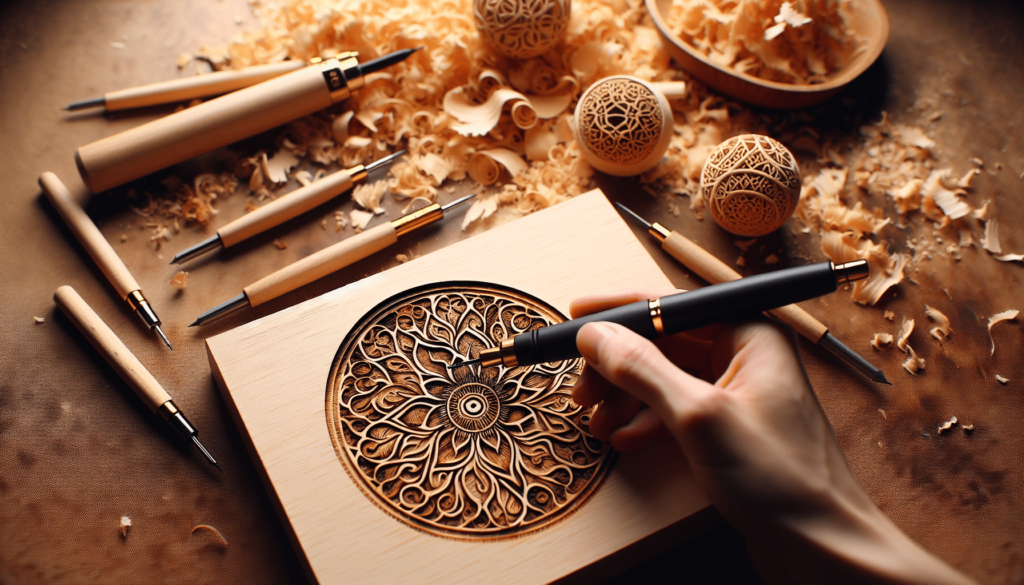What do you call the art of wood burning? It’s not the most common craft, but there’s something mesmerizing about turning a plain piece of wood into a work of art with just a heated tool. That, my friend, is pyrography. Yes, I know it sounds like a high-stakes game involving fire and some ancient language, but it’s actually a fantastic form of artistic expression and a great way to spend a rainy Sunday. So let’s dive into the world of pyrography and see what it’s all about, shall we?

The Basics of Pyrography
Definition of Pyrography
Pyrography, from the Greek words “pur” (fire) and “graphos” (writing), literally translates to “writing with fire.” It’s a method of decorating wood or other materials using burn marks resulting from the controlled application of a heated object. Fancy, right?
How Long Has Pyrography Been Around?
Believe it or not, pyrography has been around for centuries. The earliest known examples date back to the Han Dynasty in China (206 BC – 220 AD). Over the years, different cultures have used this technique, from the Egyptians to the Romans, and it has evolved significantly with advancements in technology.
Tools of the Trade
Before you grab a lighter and a piece of wood, let’s talk about the tools typically used in pyrography. Here’s a handy table to keep things clear:
| Tool | Description |
|---|---|
| Pyrography Pen | Electric tool with changeable tips for different effects. Can be temperature controlled. |
| Wire Nib | Thin wire heated by electricity, used for fine details. |
| Stencils | Pre-cut shapes or patterns to guide your designs. |
| Sandpaper | Used to smooth the wood surface before starting and to clean up any rough edges after burning. |
Different Techniques in Pyrography
There’s more to pyrography than just doodling on wood with a hot tool. Here are some popular techniques:
1. Basic Line Work
This is the foundation of pyrography. It involves drawing simple lines and patterns to create an image. Think of it as the outline drawing in your childhood coloring books.
2. Shading
Shading adds depth and dimension to your designs. By varying the temperature and pressure, you can achieve gradients and shadows that make your art pop.
3. Stippling
This technique involves creating an image using tiny dots. It’s time-consuming but can result in some truly stunning effects.
Getting Started With Pyrography
Choosing Your Wood
Not all wood is created equal, especially when it comes to pyrography. Softwoods like pine and basswood are more forgiving for beginners because they burn easily and cleanly. Hardwoods like oak and walnut, while beautiful, require a bit more patience and skill.
Safety First
Let’s not forget, you’re working with fire here. Always ensure you’re in a well-ventilated area, wear a mask to avoid inhaling fumes, and keep a fire extinguisher nearby just in case.
Preparing Your Workspace
Before you start, make sure your work area is clean and organized. Have all your tools within arm’s reach, and keep your pyrography pen on a heat-resistant mat or stand. Also, your wood should be sanded smooth to get the best results.
Advanced Techniques and Tips
Layering
Once you’ve mastered the basic techniques, you can start layering your burns to create more intricate designs. This adds complexity and is perfect for creating realistic textures.
Blending
Using different heat settings and burn times, you can blend your strokes for a more seamless look. This is especially useful for realistic images where you want smooth transitions between shades.
Mixed Media
Why not combine pyrography with other art forms? You can paint over your burned designs or incorporate elements like carving and inlay to add an extra dimension.
Common Mistakes and How to Avoid Them
Overburning
If your wood is turning to ash, you’re overdoing it. Lower the temperature and lighten your touch. Remember, pyrography is a marathon, not a sprint.
Poor Planning
Jumping in without a clear plan can lead to mistakes. Sketch your design lightly on the wood before starting, and follow it closely.
Inconsistent Lines
Keep your strokes steady and consistent. It helps to practice on scrap wood before starting on your main piece.

Artistic Inspiration
Popular Themes
From nature scenes to abstract designs, there’s no limit to what you can create with pyrography. Some artists focus on detailed portraits, while others stick to geometric patterns. Nature themes, like trees, animals, and landscapes, are particularly popular.
Artists to Follow
Several artists have taken pyrography to the next level, pushing the boundaries of what can be achieved with this medium. Here’s a list of a few notable names to follow:
- Sue Walters: Known for her detailed animal portraits.
- Simon Easton: Authored several books on the subject and known for diverse styles.
- Lora S. Irish: A master of creating intricate patterns and designs, especially in bas-relief.
The Benefits of Pyrography
Psychological Benefits
Engaging in pyrography isn’t just a creative outlet; it’s also a form of relaxation and stress relief. The repetitive nature of the techniques can be meditative, helping to calm the mind.
Skill Development
Over time, you’ll develop better hand-eye coordination, attention to detail, and even a bit of patience—something we could all use more of.
Troubleshooting Common Issues
Uneven Burns
If your burns are coming out uneven, it might be due to inconsistent pressure or temperature. Regularly check and adjust your settings for consistent results.
Smudging
Sometimes the wood can get smudged with carbon from the burns. Use a fine-grit sandpaper to clean up any smudges.
Burnt Out Tips
If your pyrography pen’s tips are burning out too quickly, you might be using too high a temperature or leaving the pen plugged in for too long. Always follow the manufacturer’s instructions for proper care.
Expanding Your Skills
Joining a Community
There are plenty of online forums, social media groups, and local clubs where you can connect with fellow pyrographers. Sharing your work and getting feedback can significantly accelerate your learning.
Taking Classes
If you’re looking for more structured learning, consider taking a class or workshop. Many community centers and art schools offer courses in pyrography, and you’ll get hands-on experience with guidance from an expert.
The Environmental Impact of Pyrography
Sustainable Wood Sources
Where you get your wood matters. Always try to source it sustainably, opting for responsibly harvested or reclaimed wood.
Safe Disposal
Burning wood does release carbon into the atmosphere, so it’s important to be mindful of your environmental footprint. Dispose of any waste responsibly, and consider composting wood shavings and other scraps.
Conclusion
So, now you know what the term for wood burning is: pyrography. It’s an ancient art form that offers endless possibilities for creativity and expression. Whether you’re a seasoned artist or a complete beginner, there’s something incredibly satisfying about turning a simple piece of wood into a work of art with just a bit of heat and a lot of imagination. So why not give it a try? Who knows, you might find it as enchanting as I do.

